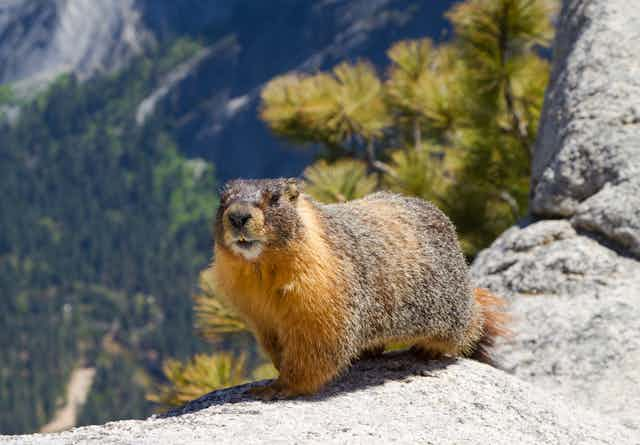The UK’s weather did a somersault in the first half of 2020, as the wettest February on record gave way to the sunniest spring. Climate change has warped the environmental conditions that might be considered normal, creating progressively weirder seasons that cause havoc for society. Longer, drier summers increase the risk of crop failure and fires, floods engulf homes, and less winter snowfall and earlier thaws threaten freshwater supplies.
But how do animals cope? Many species have evolved life cycles and strategies for coping with the seasons over millions of years, particularly those in temperate to arctic and alpine environments. Here, seasonal variability is large and predictable. Short and mild summers produce bursts of vegetation and food, the perfect time to give birth to young that can forage to develop their fitness. Long, harsh winters when food is scarce have shaped animals to largely depend on fat reserves for energy, and in extreme cases, to hibernate or migrate.
But as species come to inhabit seasons that no longer resemble those they evolved in, their chances of survival are governed less by their own careful adaptations, and more by the capricious weather. For species eking out an existence in seasonal climates, winter and summer produce distinct challenges of their own.
Climate change and seasonal survival
In new research, we explored how yellow-bellied marmots in the Colorado Rocky Mountains have responded to climate change. Since the 1970s, every marmot pup born at the study site has been marked, and its life followed year after year.
Marmots are large, burrowing ground squirrels, and they have a distinct seasonal life cycle, with a four-month period during the spring and summer when they’re active and need to gain weight by foraging on plants, and an eight-month period of hibernation during autumn and winter. Marmots, like other burrowing and herbivorous mammals, help shape important habitats and serve as prey for many predators.

When I first arrived at the alpine field station in April, I was amazed by the thick layer of snow that reached the roofs of the small wooden cabins dotted around the town of Gothic, named after Gothic Mountain which looms above it. But spring set in and the snow melted, and by midsummer, wildflowers transformed the valley floor.
Climate records painted a gloomier picture, though. Over the past 40 years, winters have warmed by between two and four degrees Celsius on average, while annual snowfall has declined by three and a half metres. Summers have warmed by two degrees Celsius, lengthened by about 50 days and changed from predominantly wet to predominantly dry.

During this time, the chance of marmots surviving a summer has increased, but the chance of surviving the winter hibernation has decreased. The biggest changes in seasonal survival have been noted among younger age classes (the pups and one-year-olds).
We found that lower winter survival tended to be the result of conditions during the previous summer, when heat and drought likely reduced foraging conditions for marmots, leaving them in poor stead for hibernation.
Whether a marmot survived a summer depended on conditions in both seasons. Pups were more likely to survive the summer if it followed a winter with low snowfall. This was most likely because the mothers of these pups were in better condition as forage plants became available sooner after hibernation.

Unexpectedly, one-year-olds survived better when summers were longer and warmer. It may be that yearlings with their smaller body size are less prone to heat stress compared to adults. Nevertheless, we suspect that their resilience may not last as summers continue to warm and become drier.
Simply focusing on the survival of a species over the entire year may disguise these more dramatic seasonal responses to climate change, lulling us into a false sense of security. And contrasting seasonal responses don’t necessarily cancel each other out. For the marmots, the net change over the year was negative for pups, positive for yearlings, while there was no change for adults.
Read more: Animals will struggle to adapt fast enough to cope with climate change, study finds
The fact that climate change can result in beneficial conditions in one season, and difficult conditions in another has potentially wide-ranging consequences for the persistence of species occupying temperate to more extreme habitats, such as deserts, mountains and polar regions, where the most rapid changes in climate are being observed. Similar findings have emerged from other species around the world, from meerkats in the Kalahari Desert to bighorn sheep in the Canadian Rocky Mountains.
For wildlife living near the poles or near mountain tops, like marmots, there is nowhere to go when conditions slide further and further from optimal.


